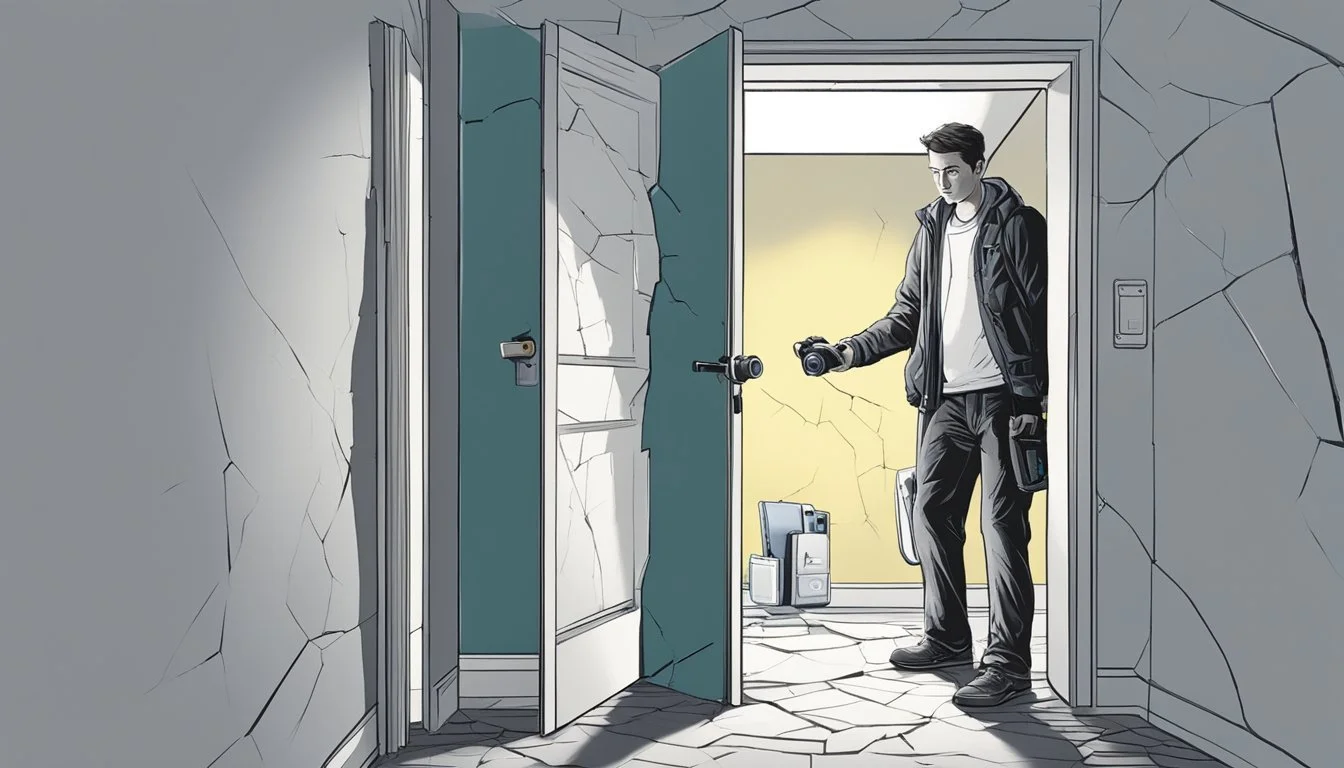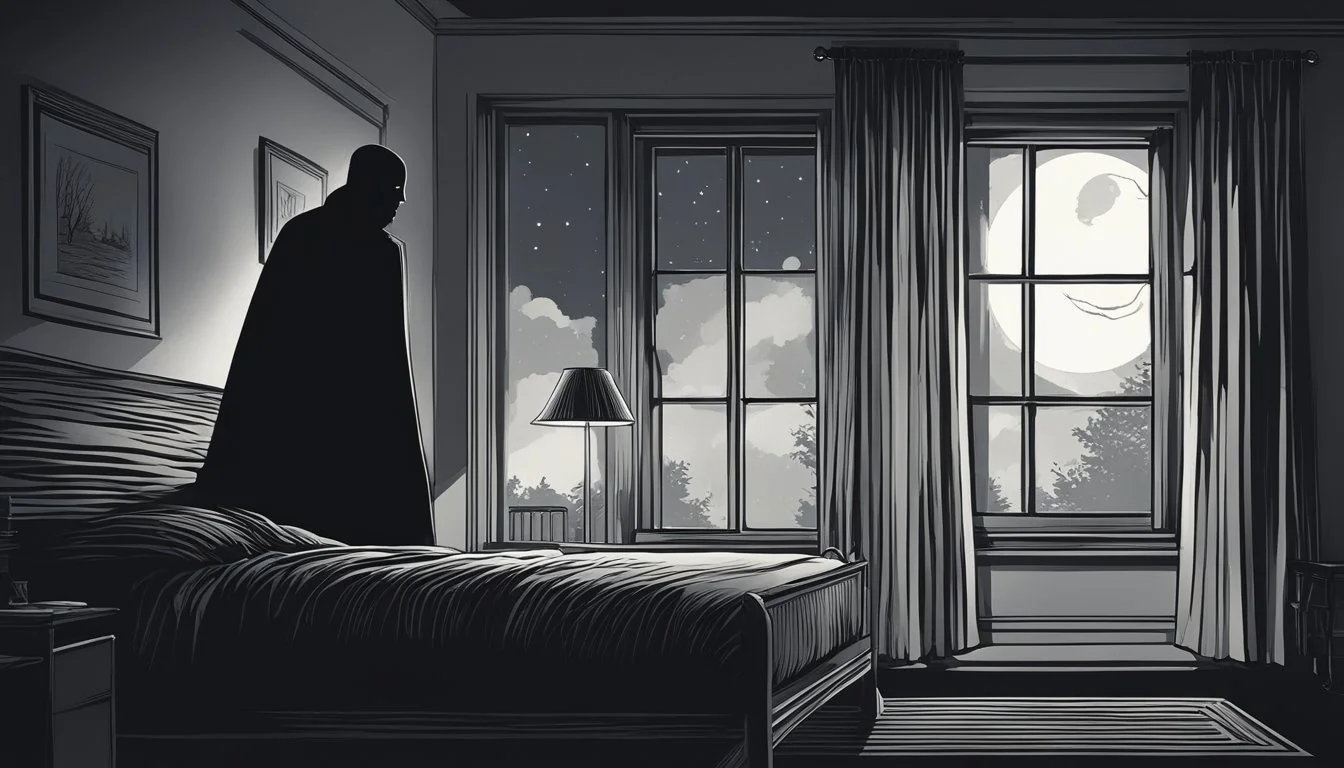Invasion of Privacy: Dean Carter, the Bedroom Basher
Examining a Serial Killer's Crimes
Dean Carter, known as the "Bedroom Basher," terrorized California in the 1980s with a series of brutal home invasions and murders. His crimes exemplified a chilling invasion of privacy, as he targeted unsuspecting victims in their most vulnerable moments. Carter's actions led to heightened awareness of home security measures and sparked discussions about protecting one's personal space from intruders.
The Bedroom Basher case captivated public attention due to the brazen nature of the attacks and the killer's evasion of law enforcement. Carter's modus operandi involved breaking into homes late at night, catching residents off guard in their bedrooms. This pattern of behavior earned him the infamous moniker and struck fear into communities across the state.
Carter's reign of terror prompted significant changes in how people approached home security. Many residents began implementing additional safety measures, such as improved locks, alarm systems, and increased vigilance. The case serves as a stark reminder of the importance of personal safety and the potential consequences of lax security in one's private space.
Historical Context
The late 1970s in California saw a surge in violent crime, with a series of brutal home invasions and sexual assaults shocking residents. This period set the stage for the emergence of one of Orange County's most notorious criminals.
The 1970s Crime Landscape in California
California experienced a significant increase in violent crime rates during the 1970s. Orange County, in particular, became a focal point for a series of home invasions and sexual assaults. The decade saw a 50% rise in reported rapes statewide.
Law enforcement agencies struggled to keep pace with the growing crime wave. Limited forensic technology and communication between jurisdictions often hampered investigations.
The public's fear heightened as news of brutal attacks spread. Many residents invested in home security systems and formed neighborhood watch programs in response to the perceived threat.
Origins of the 'Bedroom Basher' Moniker
The term "Bedroom Basher" emerged in 1978 as local media sought to describe a series of violent home invasions in Orange County. The nickname reflected the attacker's modus operandi of targeting sleeping victims in their bedrooms.
Between 1978 and 1979, a string of murders and sexual assaults terrorized the community. The perpetrator typically entered homes at night, attacking women while they slept.
Law enforcement initially struggled to connect the crimes due to their geographic spread across Orange County. The brutal nature of the attacks, often involving blunt force trauma, solidified the "Basher" part of the moniker.
The nickname quickly caught on in news reports, heightening public awareness and fear of the unknown assailant prowling Orange County's neighborhoods.
Profile of Dean Carter
Dean Phillip Carter, known as the "Bedroom Basher", was a convicted serial killer who terrorized California in the 1980s. His criminal history, military background, and psychological makeup provide insight into the man behind the brutal murders.
Early Life and Criminal Background
Dean Carter was born in 1955 in Oregon. He had a troubled youth, marked by behavioral issues and run-ins with the law. By his late teens, Carter had already accumulated a criminal record.
His crimes escalated in severity over time. In 1984, Carter received a 56-year sentence for raping a woman at knifepoint in Ventura, California. This incident marked the beginning of his most violent period.
Between 1984 and 1986, Carter committed a series of brutal home invasions, rapes, and murders across California. His modus operandi involved breaking into homes and attacking women in their bedrooms, earning him the moniker "Bedroom Basher".
Link to the Marine Corps
Carter served in the United States Marine Corps for a brief period. His military service provides context to his later crimes.
The rigid structure and discipline of the Marines contrasted sharply with Carter's criminal behavior. It's unclear how his military experience influenced his later actions.
Carter's time in the Marines may have given him skills he later used in his crimes, such as stealth and physical strength. However, the exact impact of his service on his criminal career remains a subject of speculation.
Psychological Profile
Experts believe Dean Carter exhibited traits consistent with antisocial personality disorder. This condition is characterized by a disregard for others' rights and a lack of empathy.
Carter's crimes displayed a pattern of impulsivity and lack of remorse. He showed no apparent guilt for his actions, even after his capture and conviction.
His ability to maintain a seemingly normal life while committing heinous crimes suggests a capacity for compartmentalization. This trait is often seen in individuals with severe personality disorders.
Carter's psychological profile paints a picture of a dangerous predator. His lack of empathy and disregard for social norms made him a significant threat to public safety.
Timeline of Crimes
Dean Carter's criminal activities spanned several years and locations across California. His brutal home invasions and murders terrorized communities, leaving a trail of devastation in their wake.
The Orange County Murders
Carter's reign of terror began in Costa Mesa in 1978. He targeted women in their homes, breaking in at night. His first known victim was Kimberly Rawlins, 21, murdered on March 11, 1978. Over the next year, Carter claimed four more lives in Orange County:
Sandra Fry, 17 - April 17, 1978
Marolyn Carleton, 31 - August 19, 1978
Chantal Green, 20 - September 30, 1978
Debora Kennedy, 24 - June 26, 1979
Each crime followed a similar pattern: home invasion, sexual assault, and brutal murder. Carter earned the moniker "Bedroom Basher" due to his modus operandi.
Expansion of Criminal Activities to Ventura
After the Orange County murders, Carter expanded his criminal activities to Ventura County. On March 25, 1984, he broke into the apartment of Jillette Mills, 25, in Ventura. Carter raped and murdered Mills, then stole her car.
Two days later, on March 27, he committed another home invasion in Ventura. This time, his victim was Susan Knoll, 25. Carter followed his established pattern of rape-murder.
Capture and Arrest
Carter's crime spree came to an end in April 1984. A sharp-eyed citizen spotted him driving Mills' stolen vehicle in Arizona. Local police arrested Carter on April 17, 1984, for auto theft.
Subsequent investigation linked him to the Ventura murders. DNA evidence later connected Carter to the Orange County crimes. In 1989, he was charged with six counts of first-degree murder.
Carter's trial began in 1992. The prosecution presented overwhelming evidence, including DNA matches and fingerprints. On February 22, 1992, the jury found Carter guilty on all counts.
Legal Proceedings
Dean Carter faced serious legal consequences for his violent crimes as the Bedroom Basher. His case involved multiple murder charges, sexual assault allegations, and groundbreaking use of DNA evidence.
Trial and Conviction
Dean Carter stood trial for four first-degree murders committed in California during the 1980s. Prosecutors presented DNA evidence linking Carter to the crime scenes, a relatively new technology at the time. Victim impact statements and testimony from survivors played key roles in the proceedings.
The jury found Carter guilty on all counts. His brutal methods and the number of victims led to a swift conviction.
Appeal Attempts and Death Penalty
After his conviction, Carter received the death penalty. He filed multiple appeals with the California Supreme Court challenging both his conviction and sentence.
Carter's legal team argued issues with evidence handling and jury instructions. The court rejected these appeals, upholding the original verdict and death sentence.
Carter remains on death row in California as of 2024.
Impact of DNA Technology on the Case
DNA evidence proved crucial in Carter's trial and conviction. It placed him at multiple crime scenes and linked him conclusively to the murders.
This case helped establish DNA as a powerful forensic tool. Prosecutors used it to connect seemingly unrelated crimes to a single perpetrator.
The successful use of DNA in the Bedroom Basher case paved the way for its wider adoption in criminal investigations and trials across the United States.
Victims and Survivors
Dean Carter's brutal attacks left a devastating trail of victims and survivors across California. His crimes profoundly impacted individuals, families, and communities.
Notable Cases and Victim Accounts
Debora Kennedy, 24, survived a vicious assault by Carter in her Ventura apartment in 1984. She fought back fiercely, sustaining severe injuries but managing to escape. Her testimony proved crucial in Carter's conviction.
Kimberly Rawlins, 21, and Marolyn Carleton, 31, were both brutally murdered in their Los Angeles homes in 1984. Carter gained entry through windows, attacking the women as they slept.
Chantal Green, 29, was killed in her San Diego apartment in 1984. Her sister discovered her body. This case helped link the series of murders to a single perpetrator.
Family Perspectives and Victim Impact
Sandra Fry, mother of victim Janette Cullins, spoke publicly about the enduring pain of losing her daughter. She advocated for victims' rights and harsher sentences for violent offenders.
The families of Tok Kim and Bonnie Guthrie formed support groups for those affected by violent crimes. They worked to keep their loved ones' memories alive while coping with their grief.
Survivors like Debora Senior faced long-term physical and emotional challenges. Many required extensive therapy and struggled with PTSD in the aftermath of Carter's attacks.
Wrongful Conviction and Exoneration
The justice system is not infallible. Mistakes can lead to innocent people being imprisoned for crimes they did not commit.
The Case of Kevin Green
Kevin Green was wrongfully convicted of murdering his pregnant wife and assaulting her in 1980. He spent 16 years in prison before being exonerated in 1996. DNA evidence and a confession from serial killer Gerald Parker, known as the "Bedroom Basher," cleared Green's name.
Parker admitted to attacking Green's wife and five other murders. He earned his nickname by breaking into women's bedrooms to rape and kill them. Green's case highlighted issues of mistaken identity and the importance of thorough investigations.
The exoneration process shed light on a series of unsolved murders in the area. It also raised questions about the reliability of confessions and the proper application of Miranda rights during interrogations.
Green's release underscored the critical role of DNA evidence in overturning wrongful convictions. His case became a stark reminder of how heinous crimes can lead to rushed judgments and devastating consequences for the wrongly accused.
Legacy and Societal Impact
Dean Carter's case exposed flaws in the justice system and shaped public perception of violent crime. It highlighted issues with evidence handling and sparked debates on capital punishment.
Reflection on Justice System Failures
Carter's crimes revealed weaknesses in law enforcement coordination. Different jurisdictions failed to connect similar assault cases, allowing him to evade capture longer. This led to improved information sharing between police departments.
The case also exposed issues with DNA evidence processing. Delays in testing contributed to Carter remaining free to commit more crimes. This prompted calls for faster forensic analysis and better funding for crime labs.
Carter's lengthy appeals process raised questions about death penalty implementation. He spent over 30 years on death row at San Quentin State Prison before dying of natural causes in 2022. This fueled debates on the cost and effectiveness of capital punishment.
Media Coverage and Public Perception
Extensive media coverage of Carter's slayings heightened public fear of violent crime. News reports dubbed him the "Bedroom Basher," creating a sensationalized image of the serial rapist and murderer.
This coverage influenced public opinion on sentencing for violent offenders. Many called for harsher punishments and swifter justice in the wake of Carter's crimes.
The case also sparked discussions on home security. Sales of alarm systems and door locks increased in areas where Carter had committed his attacks. This reflected growing anxiety about personal safety.




